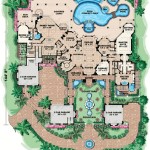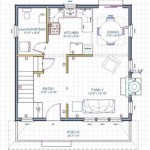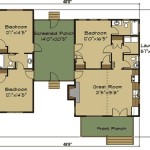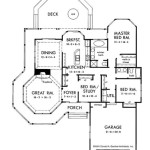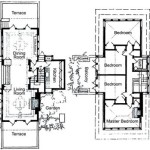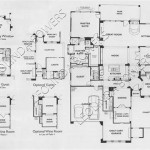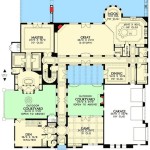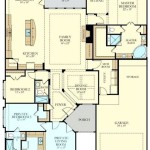1600 Square Foot House Plans: Considerations for Design and Functionality
The selection of 1600 square foot house plans involves careful consideration of lifestyle needs, budget constraints, and site-specific conditions. This size dwelling offers a balance between affordability and comfortable living space for a variety of households. The design process requires a strategic approach to optimize space utilization, prioritizing key features and ensuring a cohesive and functional layout.
A 1600 square foot home provides sufficient space for a family or individuals seeking a comfortable and manageable living environment. It allows for the inclusion of several bedrooms, bathrooms, a living area, a kitchen, and potentially additional spaces like a home office or a dedicated dining area. However, careful planning is crucial to avoid a cramped or inefficient design. Understanding the implications of different layouts and architectural styles is essential for achieving a satisfying result.
The following sections will delve into key aspects of 1600 square foot house plans, including design considerations, space optimization techniques, and factors influencing the overall cost of construction. The aim is to provide a comprehensive overview to guide prospective homeowners in making informed decisions regarding their housing needs.
Optimizing Space and Layout in 1600 Square Foot Homes
Effective space optimization is paramount when designing a 1600 square foot home. The goal is to maximize the functionality of each room and create a sense of spaciousness despite the relatively limited square footage. Several techniques can be employed to achieve this, including open-concept layouts, strategic use of natural light, and smart storage solutions.
Open-concept layouts, which combine the living room, dining area, and kitchen into a single, larger space, are a popular and effective way to make a home feel more spacious. Removing interior walls creates better flow and allows natural light to penetrate deeper into the house. This, in turn, creates a more inviting and airy atmosphere. However, it is important to consider sound control and visual separation within the open space through the use of furniture placement, different flooring materials, or strategically placed partial walls.
Natural light plays a vital role in the perceived size and comfort of a home. Large windows, skylights, and strategically placed doors can significantly increase the amount of natural light entering the interior spaces. Proper window placement can also maximize views of the surrounding landscape, further enhancing the feeling of openness. The orientation of the house on the building site should be carefully considered to optimize solar gain in the winter and minimize heat gain in the summer. Strategies like incorporating overhangs or awnings can help control the amount of sunlight entering the house and improve energy efficiency.
Storage is often a challenge in smaller homes. Integrated storage solutions, such as built-in shelving, under-stair storage, and closet organizers, can help maximize space and reduce clutter. Utilizing vertical space with tall cabinets and shelves can also provide additional storage without taking up valuable floor space. Multi-functional furniture, such as sofa beds and storage ottomans, can further enhance space efficiency.
The arrangement of rooms within the house is equally important. The placement of bedrooms, bathrooms, and living areas should be carefully considered to ensure privacy, convenience, and efficient traffic flow. Grouping bedrooms together in a dedicated area can create a more private and restful zone. Placing bathrooms near bedrooms and living areas enhances accessibility and convenience. The kitchen should be located near the dining area for ease of serving meals. Circulation paths should be clear and direct, minimizing wasted space and facilitating movement throughout the house.
Key Design Considerations for 1600 Square Foot House Plans
Several design considerations influence the overall functionality and aesthetic appeal of a 1600 square foot house plan. These include architectural style, number of bedrooms and bathrooms, kitchen design, and exterior features. Thoughtful planning and attention to detail are essential for creating a home that meets the specific needs and preferences of the occupants.
Architectural style significantly impacts the overall appearance and feel of the house. Popular styles for 1600 square foot homes include ranch-style, craftsman, contemporary, and farmhouse. Ranch-style homes are typically single-story, offering ease of access and a simple, open layout. Craftsman homes feature detailed woodwork, a welcoming front porch, and a cozy, inviting atmosphere. Contemporary homes emphasize clean lines, large windows, and a minimalist aesthetic. Farmhouse homes combine rustic charm with modern functionality, often incorporating features like a large kitchen, exposed beams, and a comfortable front porch.
The number of bedrooms and bathrooms required will depend on the size and composition of the household. A 1600 square foot home can typically accommodate three bedrooms and two bathrooms comfortably. However, the specific layout and size of each room will vary depending on the overall design. Consider the needs of each household member when determining the size and location of bedrooms and bathrooms. A master suite with a private bathroom and walk-in closet is a desirable feature for many homeowners. Guest bedrooms should be located in a separate area to provide privacy for visitors.
The kitchen is often considered the heart of the home, and its design is crucial for both functionality and aesthetic appeal. A well-designed kitchen should be both efficient and visually appealing. Consider the placement of appliances, countertops, and storage areas to optimize workflow. A kitchen island can provide additional counter space, storage, and seating. Open-concept kitchens are popular for their ability to integrate seamlessly with the living and dining areas. The selection of materials and finishes should reflect the overall style of the house and create a cohesive look. Consider incorporating energy-efficient appliances and features to reduce utility costs.
Exterior features contribute significantly to the curb appeal and overall value of the house. A well-designed exterior should complement the architectural style and blend seamlessly with the surrounding landscape. Consider the use of different materials, colors, and textures to create visual interest. A welcoming front porch can enhance the charm and curb appeal of the house. Landscaping can also play a vital role in creating a positive first impression. Consider incorporating features like a well-maintained lawn, flower beds, and trees to enhance the overall aesthetic appeal of the property.
Cost Considerations and Construction of 1600 Square Foot Homes
The cost of building a 1600 square foot home can vary significantly depending on several factors, including location, materials, labor costs, and the complexity of the design. Understanding these factors is essential for developing a realistic budget and making informed decisions throughout the construction process.
Location is one of the most significant factors influencing construction costs. Labor costs, material prices, and permit fees can vary widely depending on the geographic area. Building in urban areas typically costs more than building in rural areas due to higher land values and increased competition for resources. Site preparation can also add to the cost, particularly if the site requires extensive grading or clearing.
The selection of materials significantly impacts the overall cost of construction. Using high-end materials, such as hardwood flooring, granite countertops, and custom cabinetry, will increase the cost. Opting for more affordable materials, such as laminate flooring, laminate countertops, and stock cabinetry, can help reduce expenses. The exterior finishes, such as siding, roofing, and windows, also contribute to the overall cost.
Labor costs represent a significant portion of the total construction budget. Hiring experienced and qualified contractors is essential for ensuring a quality build. However, labor costs can vary depending on the skill level and experience of the workers. Obtaining multiple bids from different contractors is recommended to ensure a competitive price. It is important to thoroughly vet contractors and check references before making a hiring decision.
The complexity of the design also influences the cost of construction. Homes with intricate architectural details, custom features, and non-standard layouts typically cost more to build than simpler designs. Simplifying the design and opting for standard features can help reduce costs. Working with an experienced architect or designer can help optimize the design for cost-effectiveness without sacrificing functionality or aesthetic appeal.
In addition to the direct construction costs, it is important to factor in additional expenses such as permit fees, architectural fees, engineering fees, and insurance costs. These costs can add up significantly, so it is important to budget for them accordingly. Contingency funds should also be set aside to cover unexpected expenses or changes during the construction process.

1 600 Square Foot House Plans Houseplans Blog Com

1 600 Square Foot House Plans Houseplans Blog Com

One Story Affordable Farm House Style Plan 7371

1600 Sq Ft House Plans 4 Bd 2 Bath Like The Great Room And Views Add Garage Cabin Floor Ranch Bedroom

1600 Square Feet House Plan Sq Ft Home Design

Ranch Style House Plan 3 Beds 2 Baths 1600 Sq Ft 45 395 Plans Floor

Traditional Ranch Home Plan 3 Bedrm 2 Bath 1600 Sq Ft 141 1316

1600 Square Foot European Style House Plan 3 Bed 2 Bath

House Plan 59082 Traditional Style With 1600 Sq Ft 3 Bed 2 Ba

Contemporary Rustic House Plan Under 1600 Square Feet With 3 Bedrooms 420092wnt Architectural Designs Plans

